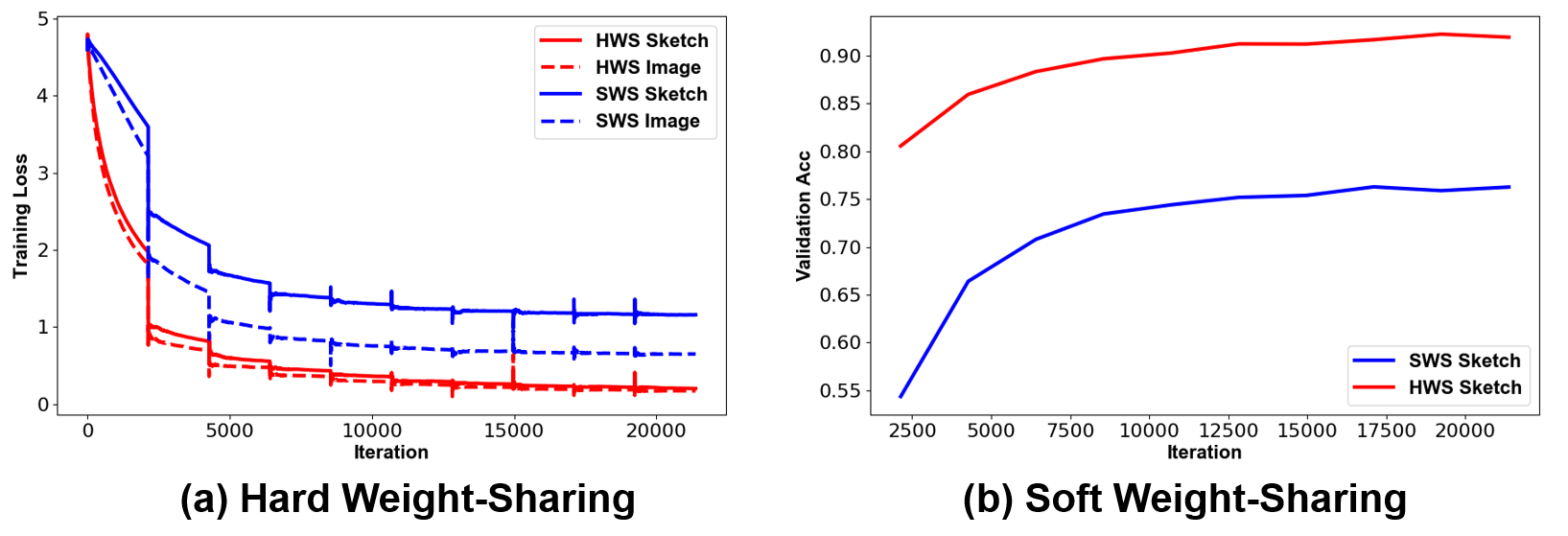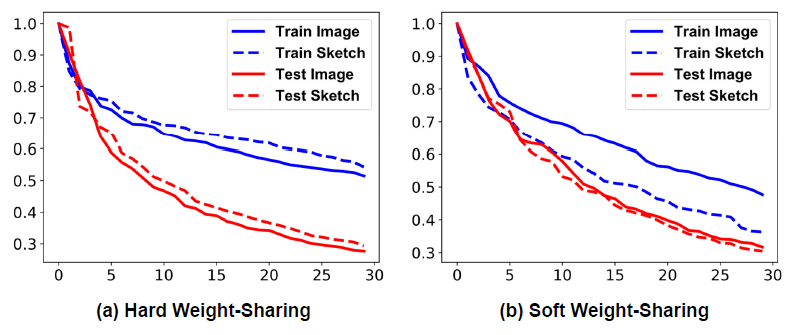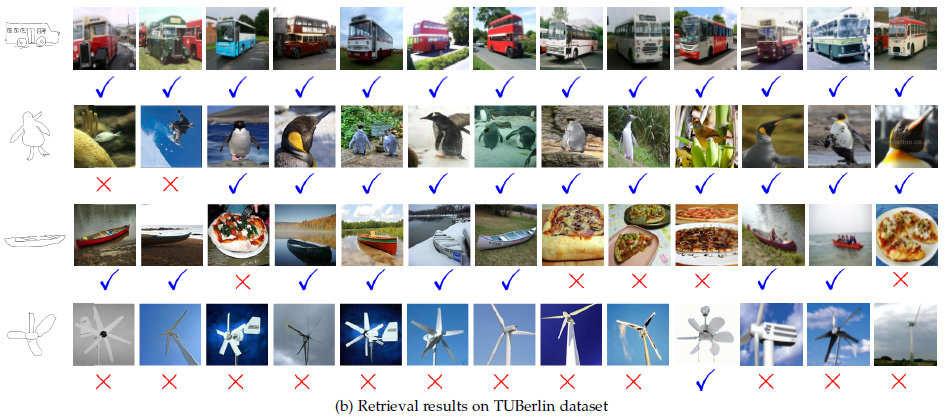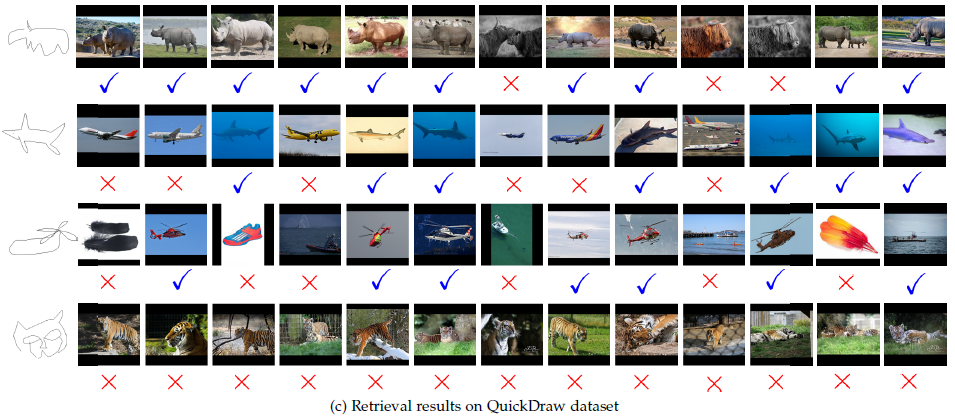TCN
Published in Submitted to Journal, 2021
Transferable Coupled Network for Zero-Shot Sketch-Based Image Retrieval
Abstract
Zero-Shot Sketch-Based Image Retrieval (ZS-SBIR) aims at searching corresponding natural images with the given free-hand sketches, under the more realistic and challenging scenario of Zero-Shot Learning (ZSL). Prior works concentrate much on aligning the sketch and image feature representations while ignoring the explicit learning of heterogeneous feature extractors to make themselves capable of aligning multi-modal features, with the expense of deteriorating the transferability from seen categories to unseen ones. To address this issue, we propose a novel Transferable Coupled Network (TCN) to effectively improve network transferability, with the constraint of soft weight-sharing among heterogeneous convolutional layers to capture similar geometric patterns, e.g., contours of sketches and images. Based on this, we further introduce and validate a general criterion to deal with multi-modal zero-shot learning, i.e., utilizing coupled modules for mining modality-common knowledge while independent modules for learning modality-specific information. Moreover, we elaborate a simple but effective semantic metric to integrate local metric learning and global semantic constraint into a unified formula to significantly boost the performance. Extensive experiments on three popular large-scale datasets show that our proposed approach outperforms state-of-the-art methods to a remarkable extent: by more than 12% on Sketchy, 2% on TU-Berlin and 6% on QuickDraw datasets in terms of retrieval accuracy. The project page is available at: https://haowang1992.github.io/publication/TCN
Introduction

Zero-shot sketch-based image retrieval aims at performing sketch-based image retrieval under the realistic scenario of zero-shot learning
Motivation

HWS: low classification loss, high validation accuracy -> low retrieval performance
SWS: higher classification loss, lower validation accuracy -> higher retrieval performance

Analysis of top-30 singular values (max-normalized in each modality) with 64 dimensional features on Sketchy
HWS: more large singulars in training sketch features than image -> low retrieval performance
SWS: less large singulars in training sketch features than image -> higher retrieval performance
Framework

Our framework consists of transferable coupled network (i.e., coupled image and sketch encoders), feature embedding network, discrimination module and semantic metric module. Specifically, the first one includes soft weight-shared convolutional layers (i.e., constrained with ) and independent batch normalization layers. Retrieval features are obtained through feature embedding network, along with discrimination loss
and semantic metric loss
. At training stage, the guiding signals produced from teacher network as well as benchmark one-hot labels are provided to calculate
. Similarly, word vectors and uniform noise are offered to compute
Result




Ablation

Ablation studies of each component

The results of top-30 singular values (max-normalized in each modality) with 64 dimensional features on Sketchy

Left: t-SNE results of using 64 dimensional features on the random selected 8 testing categories of Sketchy. The dot and cross stand for natural image and sketch, respectively. Right: corresponding retrieval examples.
Extension of TCN

Download
[pdf coming soon] [code coming soon]
Concat
Hao Wang: hwang_xidian@163.com
